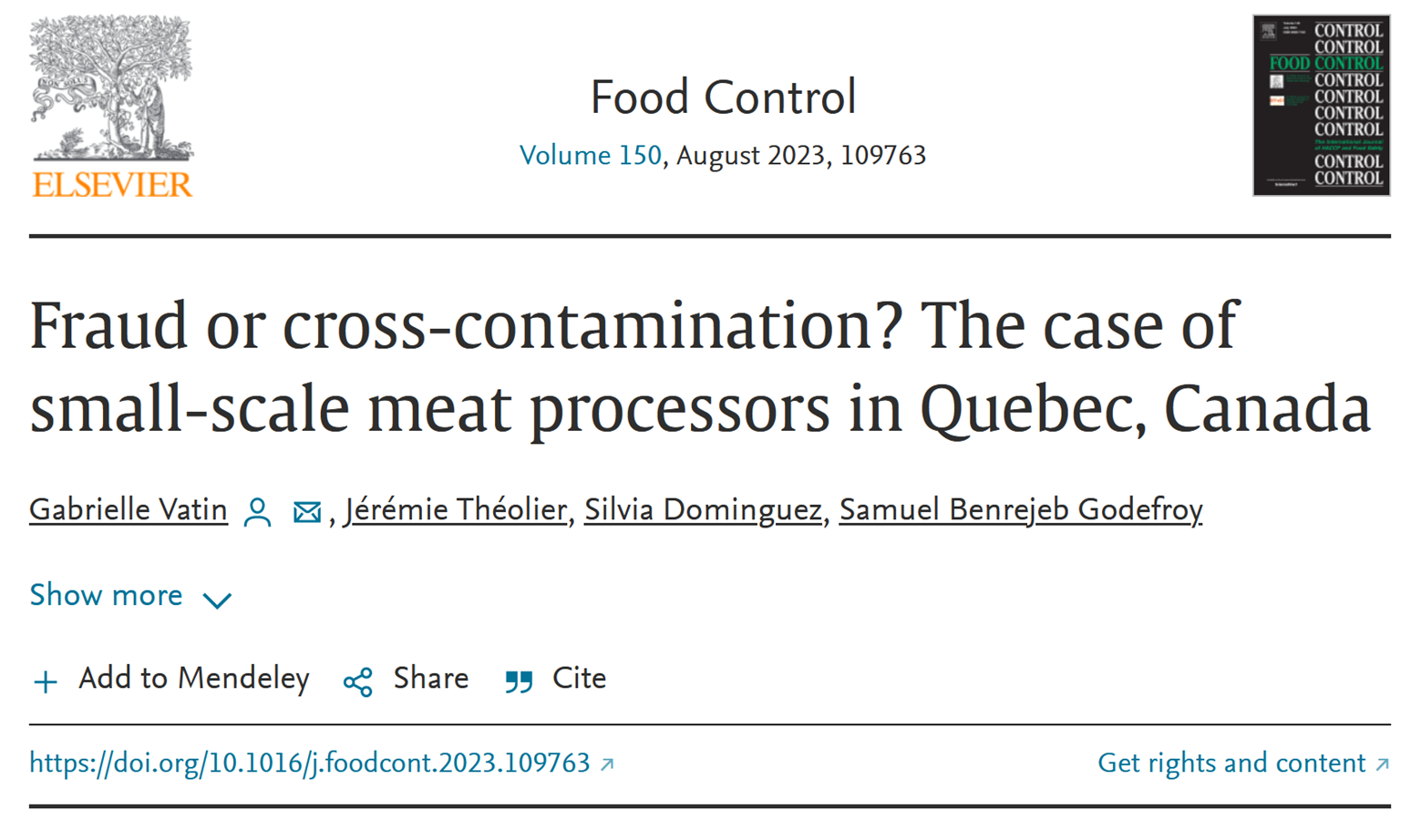This is the first doctoral article by Ms. Gabrielle Vatin published in the journal "food control".
Food fraud often manifests itself through misdeclaration of the origin of animal species in the meat sector. However, undeclared species can also occur due to cross-contamination, for example if meat is processed in shared equipment. This study evaluated (i) the probability of occurrence of cross-contact species in processed ground meat under small-scale conditions and (ii) whether a threshold (1%) for the presence of undeclared species could be used to differentiate fraud from cross-contamination. The percentage of pork in ground beef processed under simulated and small-scale commercial conditions was quantified by PCR. Experiments under simulated conditions showed that cleaning the grinder between pork and beef prevented cross-contamination - although this is not practical in small-scale operations such as butcher shops. Without cleaning, the first 500 grams of ground beef were the most contaminated (25/30 samples > 1% pork; maximum 26.49 ± 25.73), and the last 500 grams of beef after grinding were the least contaminated (4/30 samples > 1% pork; maximum 0.52 ± 1.68). Double grinding resulted in homogenization and decreased contamination detected with pork (20/30 samples > 1% pork; maximum 5.1 ± 6.12). In addition, ground beef produced in a butcher shop in Quebec City, in compliance with hygiene requirements, was analyzed. Cross-contact pork was prevalent in these samples (41/45 samples >1%). It is therefore likely that >1% pork is found in ground beef processed under normal small-scale conditions. The use of this threshold as an indicator of FF is therefore not recommended in this context, as it could expose small-scale processors to unwarranted penalties.
The link to the article (paid) is: www.sciencedirect.com/science/article/abs/pii/S0956713523001639

